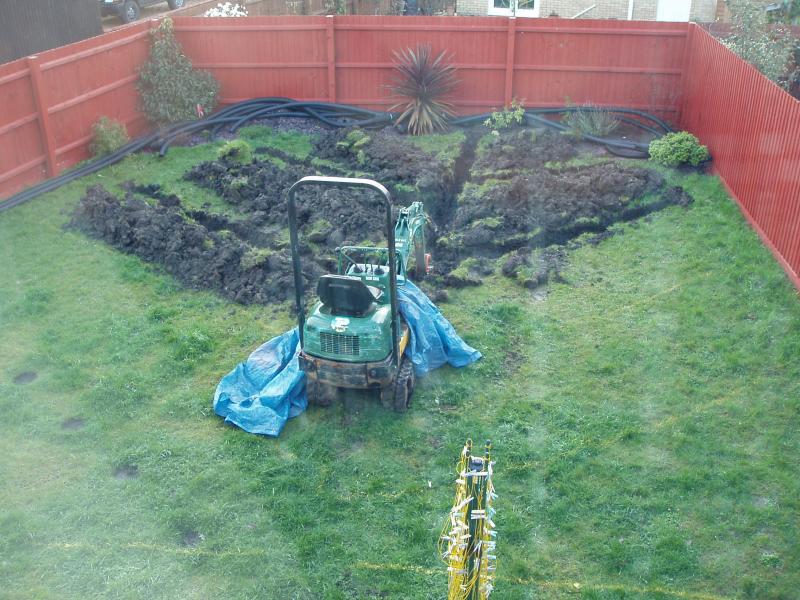I just came on this thread researching pit construction because we have a motorhome amongst other vehicles (small tractors,jcb, landrovers etc). And a 10m long garage that currently has a dirt floor but will be getting a concrete base when I get around to it. Ive worked in commercial hgv garages with full length pits and sliding pedestrian plates, and Ive used 4post ramps, and Id rather have the pit myself personally. Lord knows how much rebar its going to need to support 8 ton of jcb over it though but thats another thread.
But, why Im posting now is I have our mh up on ramps at the moment to replace the diff bearings, and its a pain to get the mh up onto them because the front spoiler the manufacturer fits hits the ramp before the wheel starts to lift it free. However, I found there was room behind the wheel under the cab area for the ramp, and I was able to kick the ramp edge under the wheel then reverse it onto the ramp like this, reverse being lower ratio also. Once it was up on the front ramps its easy to jack the back axle up and use your leveling chocks (we have those chunky fiamma ones) facing the opposite way to the ramps at the rear to get a bit more height there too and to come off the ramps one end or the other has to want to go uphill by itself, so adds a little more peace of mind for me...
Gravel is a nightmare to work on though, I feel your pain. I shovel and brush it all away and work on dirt in preference when we have to do something in the yard...
 Looking for a smarter way to manage your heating this winter? We’ve been testing the new Aqara Radiator Thermostat W600 to see how quiet, accurate and easy it is to use around the home. Click here read our review.
Looking for a smarter way to manage your heating this winter? We’ve been testing the new Aqara Radiator Thermostat W600 to see how quiet, accurate and easy it is to use around the home. Click here read our review.

